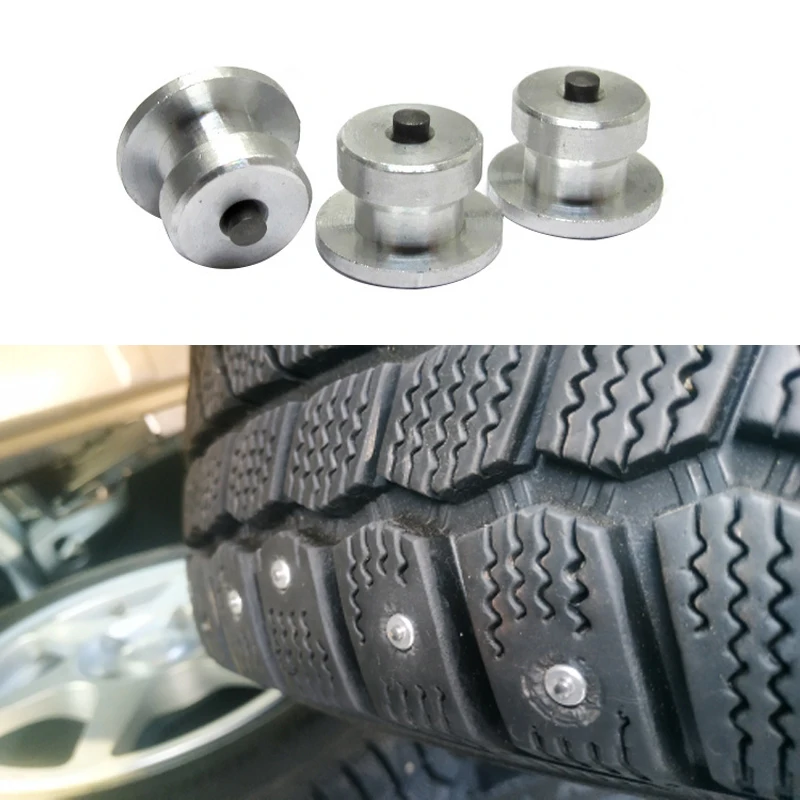Whether your region requires you to install snow-rated tires during the cold months or you simply want to sport them for added safety, you should know how much a winter tire costs. Many car owners just don’t install winter tires because they believe they’re unaffordable.
While winter tires are typically known to be more expensive, affordable options from growing tire brands like Sailun Tire don’t compromise on the quality and performance drivers expect on the icy roads.
But even the pricer ones are more affordable than your rising insurance premium, likely medical bills, and automotive repairs (not covered in the insurance policy) that you must endure due to an accident in harsh winter conditions.
Here, we will explain the cost of different winter tires and the additional expenses associated with them. If you’re in the market for new winter tires — from value-based to premium — check out our full buying guide here.
Many factors affect the price of winter tires, including brand, type, quality, and size. Since every brand has its own criteria to evaluate the price for its rubber, we would avoid commenting on it. However, we will specifically discuss type, quality and size to give you a fair idea of winter or snow tires.
For a compact car with a famous 205/55R16 size, below are approximate prices.
The three main types of winters you find in the market include studless, studded, and winter performance.
Studdless Tires
For most people, studdless winter tires are a perfect companion in cold conditions. These incorporate biting edges and soft rubber compounds, making them flexible for winter. A standard studdless tire will cost you anywhere between $60 and $550, each.
On average, for a typical compact car, expect to pay around $100-$150 per tire or $400-$600 for all four. For an SUV or light-duty pickup, the price goes up to $200-$400 each or $800-$1,200 for a set of four.
Studded Tires
For extreme weather conditions like freezing rain, sleet and wet ice, studded tires are ideal for a safe driving experience. The metal studs fixed on these tires bite into ice, giving you improved grip and handling. A studded rubber would cost you around $75-$550 or more per tire. For two pairs, you can expect to pay between $300 and $2,200.
There are also studdable options, like the Sailun Iceblazer WST1 studdable performance winter tire trusted by over 1-million drivers in Canada alone, which won’t break the bank yet designed for drivers that demand maximum traction in severe weather conditions.
Sailun IceBlazer WST1 studdable winter tireSailun IceBlazer WST1 studdable winter tireWinter Performance Tires
For guys who do not want to leave their sports cars or performance sedans in their garage in winters, they should put on winter performance tires.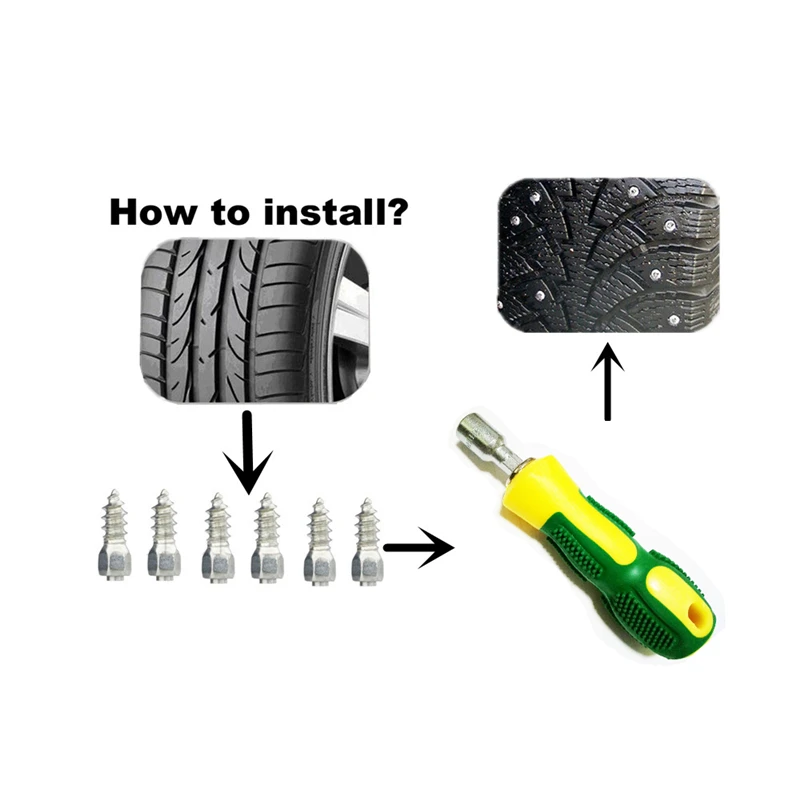 They are designed to offer excellent traction at high speeds on wet and dry roads. However, they are not your perfect companion for ice or snow-packed roads. A regular high performer is available at around $100-$500 each or $400-$2,000 for all four.
They are designed to offer excellent traction at high speeds on wet and dry roads. However, they are not your perfect companion for ice or snow-packed roads. A regular high performer is available at around $100-$500 each or $400-$2,000 for all four.
For all the prices we mentioned above, the smaller the size, the lower the cost. However, the price variation also depends on the tire brand, with American tires selling higher than Chinese-made tires.
The prices we shared above are purely for snow tires; they do not include installation charges. For installation, you have two choices. You can either mount the winter rubber on the existing wheels or buy a new set of wheels for all tires.
 On the other hand, you can buy new wheels for all tires, making it effortless to put on winters when the snow, ice, and slush appear. The four new wheels will set you back $120-$500 or more. You can always try secondhand wheels; they may cost as low as $40-$80.
On the other hand, you can buy new wheels for all tires, making it effortless to put on winters when the snow, ice, and slush appear. The four new wheels will set you back $120-$500 or more. You can always try secondhand wheels; they may cost as low as $40-$80.
 Some retailers provide direct discounts, while others may give you mail-in rebates. You may find them in the shape of gift cards or prepaid cards. The discount amount may vary as per size and model.
Some retailers provide direct discounts, while others may give you mail-in rebates. You may find them in the shape of gift cards or prepaid cards. The discount amount may vary as per size and model. Consumer Reports says that winters tires increase the snow traction by 34%, thus making it easy for you to stop and maneuver the vehicle. These tires actually cut the braking distance by around six feet. That six feet distance is often the gap between you rear-ending a car or drifting into a crossing against carefully coming to a halt without causing a mishap.
Buying the snow tires also enables you to enjoy insurance savings as well as better fuel mileage (if you maintain them well).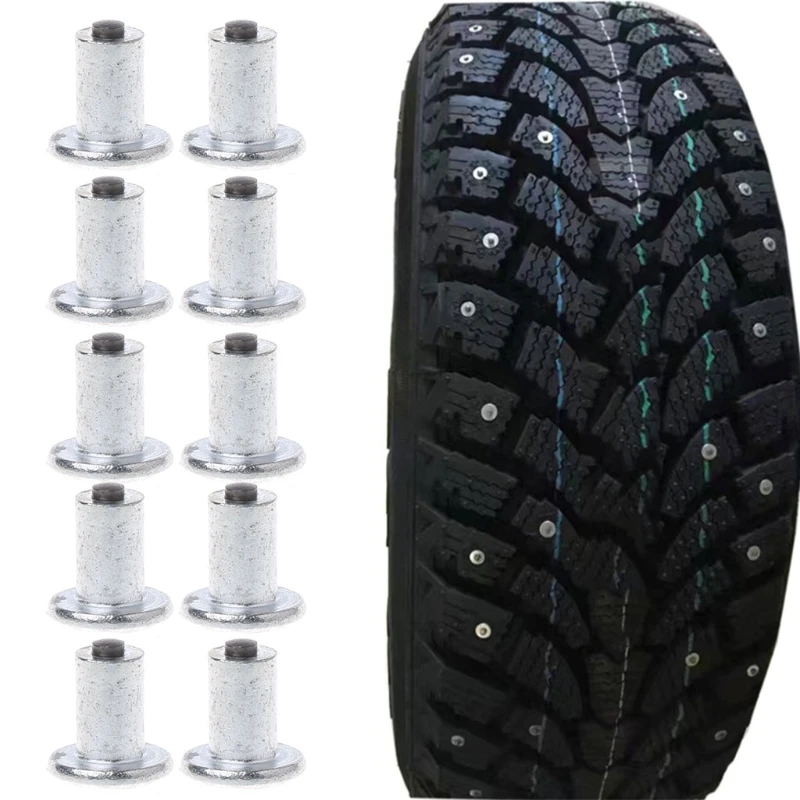
Of note, 76% of all Canadians change their all-season tires with snow tires to enjoy better traction and control. Most car owners say that these tires have saved them a possibly dangerous condition.
Researchers from Chalmers University of Technology, Sweden, have now shown that studded winter tyres cost more lives than they save. The new study takes a holistic view of the tyres' impact on wider public health. At the same time, they show that their use contributes to the bloody conflict in the Democratic Republic of Congo, and fatal accidents in their production phase.
This is the time of year in Sweden when many people start to change their normal car tyres to winter ones. According to Trafikverket, the Swedish Transport Administration, around 60% of Swedish drivers choose studded winter tyres, and there has long been a debate about the emissions caused by the studs damaging the ground and throwing up particles into the atmosphere.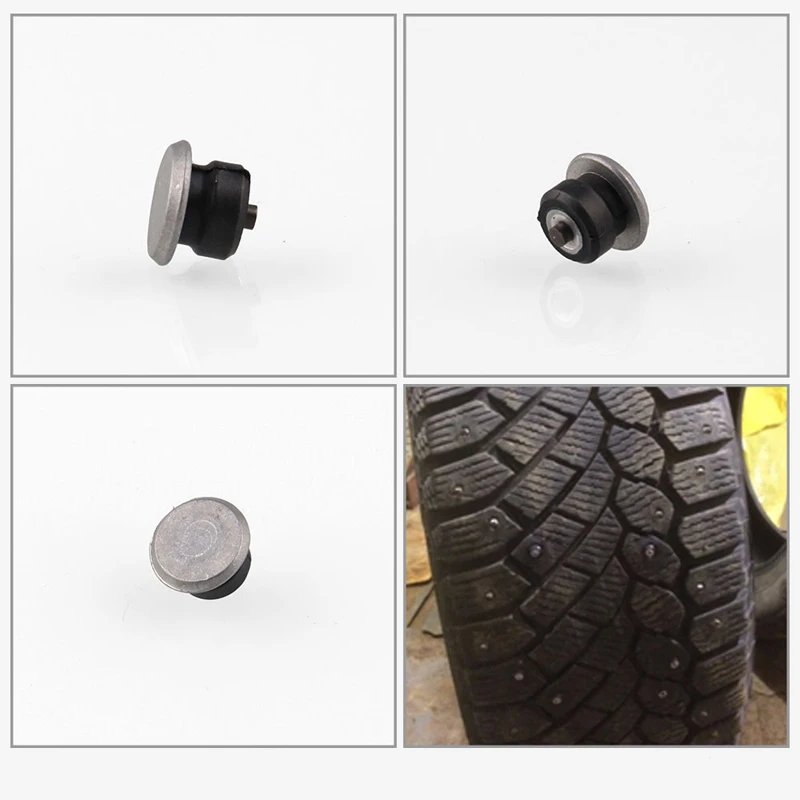
Three Chalmers researchers have now investigated this question. Anna Furberg, Sverker Molander and Rickard Arvisson at the Division of Environmental Systems Analysis used a systemic perspective to analyse studded winter tyres' public health impact for their whole life cycle.
To weigh up the advantages and disadvantages, the researchers looked at how many lives are saved through their use, compared to the level of emissions they generate through wear of the roads and in their production. Additionally, they investigated accident statistics from the small-scale mining industry in the DRC, where cobalt -- an important element for the studs -- is most abundant. Cobalt is a highly sought-after conflict metal which contributes to the warfare in the region, something the researchers also accounted for.
The researchers estimate that from a broader life cycle perspective of studded tyres' life-spans, Swedish use of studded tyres saves between 60 and 770 life-years, compared with 570 to 2200 life-years which are lost.
"Taking everything together, the picture is very clear -- studded winter tyres actually cost more lives than they save," says Sverker Molander, a professor at the Department of Technology Management and Economics at Chalmers.
The biggest negative impact is generated during usage, from the emissions caused by road damage. Even taking only this into account, the negative health impacts already clearly outweigh the advantages. Once you measure the other factors in as well, the result only becomes clearer, the researchers explain.
"The small-scale mining, where many accidents and fatalities occur, is the next biggest part of the tyres' overall negative health impact. Deaths linked to the conflict in the DRC are the smallest part, but that being said, there are many aspects of that that have not been included in the study -- the conflict of course influences the whole of society. I doubt many people realise that using these tyres is contributing to the situation in the DRC," says Anna Furberg.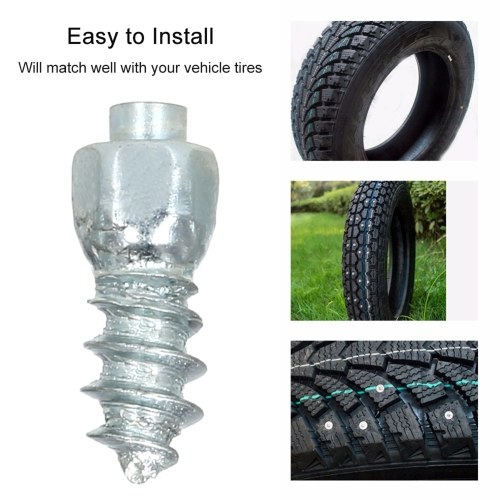
The advantages of the studded winter tyres are mainly enjoyed in Scandinavia, whilst nearly a third of the negative health impacts are felt elsewhere.
"This is a clear illustration of what globalised production can result in. People profiting at others' expense. It is not those who benefit from the product who are having to pay for the negative effects," says Sverker Molander.
So how should consumers react to this research? Anna Furberg and Sverker Molander suggest that good winter tyres without studs can be an alternative, in combination with careful driving and consideration of alternative means of travel.
"Of course, how you drive is important, and snow-ploughing and sweeping needs to be done properly. Most cars today also have electronic anti-skid systems fitted, which make them safer to drive at higher speeds. But our study shows that there is more research needed concerning alternatives to studded winter tyres that don't cause these health issues," says Anna Furberg.
The article "Live and let die? Life cycle human health impacts from the use of tire studs" was recently published in the scientific journal International Journal of Environmental Research and Public Health.
The research was carried out through the framework of the Mistra Environmental Nanosafety programme.
More on: the study
The study made use of life-cycle analysis (LCA) and disability-adjusted life years (DALY) -- a health metric developed by the World Health Organisation (WHO) -- to measure and quantify studded winter tyres' public health impact throughout their whole life cycle. The researchers investigated:
 Looking at previous studies of different types of emissions.
Looking at previous studies of different types of emissions.The biggest contribution to studded tyres' negative health impact comes from emissions from road wear (67-77 per cent), followed by accidents and fatalities in cobalt mining (8-18 per cent). Between 23 and 33 per cent of the negative effects are felt outside of Scandinavia.
More on: Studded and non-studded winter tyres
VTI, the Swedish Road and Transport Research Institute, has examined, in two major reports, the difference in grip between studded and non-studded tyres. They report that studded tyres have a clearly better grip when driving on ice compared to non-studded tires of both Nordic and European type (report in Swedish). But when driving on snow, the difference is much smaller. When the road is wet, the asphalt is salted and the temperature is around zero, the brake and steering performance of the studded tyre and non-studded Nordic tyre is virtually equivalent (report in Swedish)
But when driving on snow, the difference is much smaller. When the road is wet, the asphalt is salted and the temperature is around zero, the brake and steering performance of the studded tyre and non-studded Nordic tyre is virtually equivalent (report in Swedish)
According to a Norwegian study, studded tyres reduce the number of passenger car accidents by 2 per cent on dry roads, and 5 per cent on roads covered with ice or snow, compared to non-studded winter tires.
According to the Swedish Transport Administration , the foundation for a safe winter trip is good winter tyres, the right speed and a driving mode adapted to the ground. The Administration emphasizes that a car equipped with anti-skid system (ESC) and non-studded winter tires gives a good safety level throughout the country.
| Name of service | Price for 1 piece |
|---|---|
| Installation of repair spike | 30 r. |
| Name of service | Price for 1 piece |
|---|---|
| Installation of repair spike | 30 r. |
| Name of service | Price for 1 piece |
|---|---|
| Installation of repair spike | 30 r. |
Studding winter tires improves traction and grip, especially on rough terrain or icy roads. The presence of these elements on the rubber tread guarantees directional stability in snowy weather and prevents slipping and skidding. Often studded tires make it possible to avoid accidents.
You can install the spikes yourself, but it is best to entrust this issue to professionals. Highly qualified masters of the Wheels service center will perform their work inexpensively and efficiently. The spikes we use stand out:
The spikes we use stand out:
affordability;
excellent reliability;
durability;
excellent strength qualities;
wear resistance.
Even if you use studded tires on asphalt, the tread grip will wear out slowly. This advantage allows car owners who have to move not only on snow-covered impassability, but also on city roads, not to refuse spikes. The minimum service life of studded tires is one season.
All prices for the provision of specific services are indicated in the price list posted in the relevant section of the site. Our specialists in Izhevsk install spikes on both new and used tires. For installation, we use only modern and high-quality equipment. Thanks to this, you will not lose the studs on the road, and you will enjoy their benefits all season long.
You can find out how much studding is for your rubber, you can contact our manager by contacting him at the specified contact phone number. The price of the issue depends on the size of the tire, the condition of the tires and their manufacturer.
The price of the issue depends on the size of the tire, the condition of the tires and their manufacturer.
We are sure that in our service center you will be able to find the most favorable conditions for yourself, and you will not deal with studding yourself.
The debate on the topic “whether winter tires should be studded” among car owners themselves has been going on since the first models that provide such an opportunity appeared on the market. Someone else's experience with bringing real facts of the operation of studded tires, of course, in itself can significantly affect a personal opinion about such rubber. But, no matter what advice is given, we must not forget that, in the end, the choice will directly depend only on what you want to get in the end.
What are the objective advantages and disadvantages of tires with studs installed? Let's look at this question through the eyes of supporters and opponents of studding.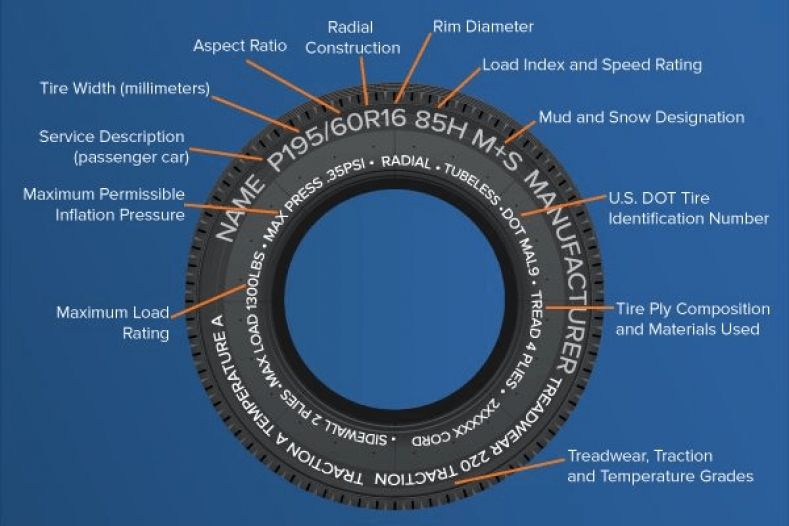
As one of the main arguments, the latter often cite a general decrease in comfort, since a wheel additionally “forged” with metal checkers creates significantly more noise than a non-studded one - and this is especially felt when driving on asphalt cleared of snow. At the same time, the noise is only a consequence of the loss of the former smoothness of the ride: the level of dynamics that is inherent in friction models, if spikes are installed, is achievable only in high-quality branded models, for example, top products from such giants as Michelin or Nokian.
In addition, for a city with its roads cleared to asphalt, there is no need for spikes. The spikes wear down on the asphalt, fall out of their nests faster, and the handling of a car in such “shoes” is often much worse here than in friction tires. Spikes are a precaution if you often have to drive around in an area where the situation under the wheels is really unpredictable and as a result of frost, melt water turns into a crust of impenetrable ice. Of course, it will be very difficult for non-studded wheels on such a surface and it makes sense to think about increasing the grip properties of the tire through a well-known procedure.
Of course, it will be very difficult for non-studded wheels on such a surface and it makes sense to think about increasing the grip properties of the tire through a well-known procedure.
Considering that winter is not summer, and the road during this period is more dangerous (which does not allow you to get too hot), then instead of high-speed comfort, according to supporters of studding, it is still better to give preference to safety. But even here, not everything is as simple as it seems at first glance.
Firstly, if you put spikes, then only high-quality ones. As practice shows, a cheap single-flange stud is extremely unreliable and a tire with such studding in ice is practically powerless. Multi-flange, although they are more expensive, but in terms of grip with ice, the result fully justifies the means. The effect of low-quality studs on ice is equivalent to the effect of the worst representatives of Velcro friction tires, so if you are going to stud, do it thoroughly.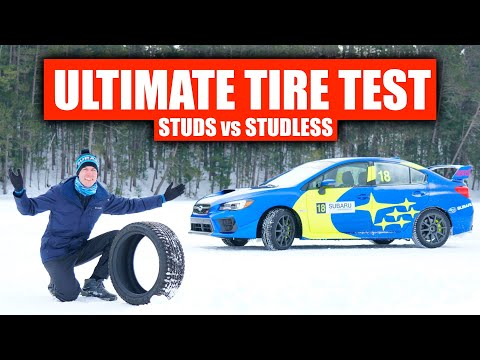
Secondly, the factory studding is by far the best in terms of workmanship. This does not mean that you need to initially look for only studded options - with good quality installation, the studs will also sit firmly in the nests, as if the tire had already been “shod” at the manufacturer's factory. In general, and in general, the key rule here is: do everything with high quality, and a positive result will nullify doubts about the correctness of the decision to stud tires.
Finally, a few words about why it is preferable to ride on purely friction tires than to leave those tires that are specifically designed for this purpose without studs. The fact is that with an emphasis on the possibilities of metal coupling elements that the tire will be equipped with, manufacturers pay less attention to the lamellae and, in order to tighten the spikes, make the blocks allocated for them harder, which does not have the best effect on the overall elasticity of the tire. The hard rubber around the holes helps keep the stud in a normal position, but if there is no stud, then this hardness only hurts traction on the road surface.